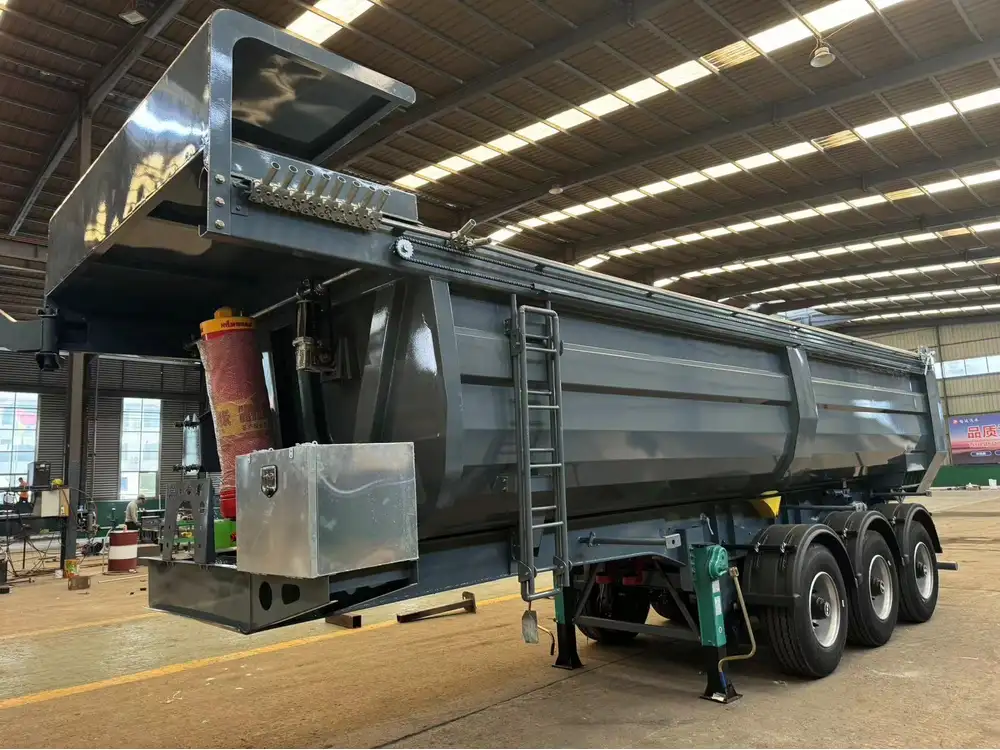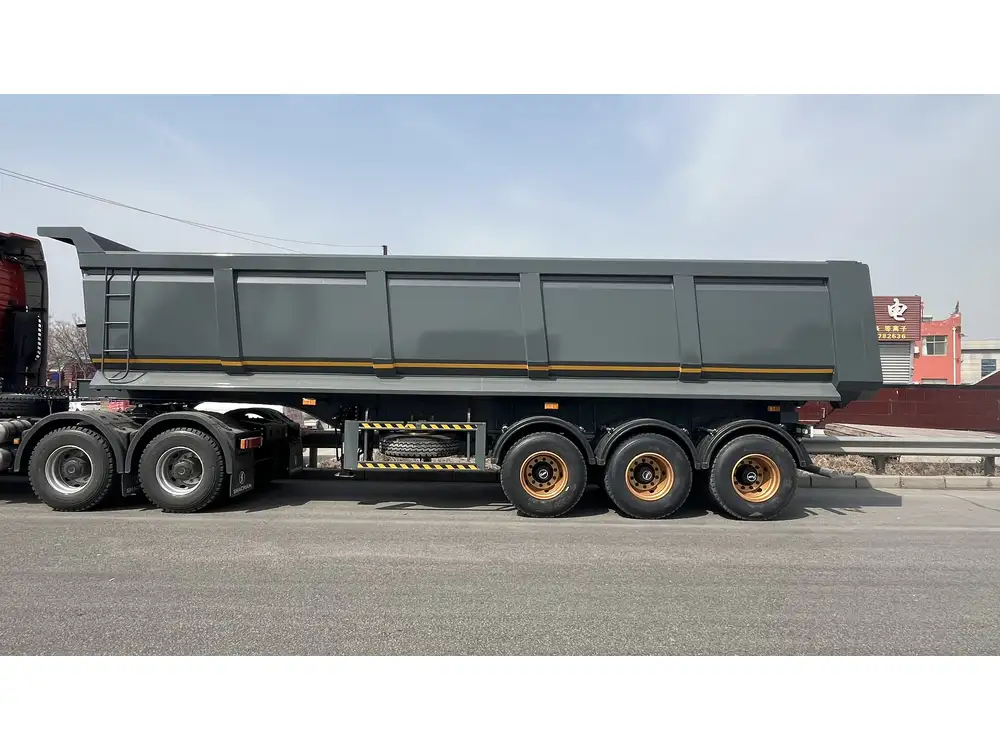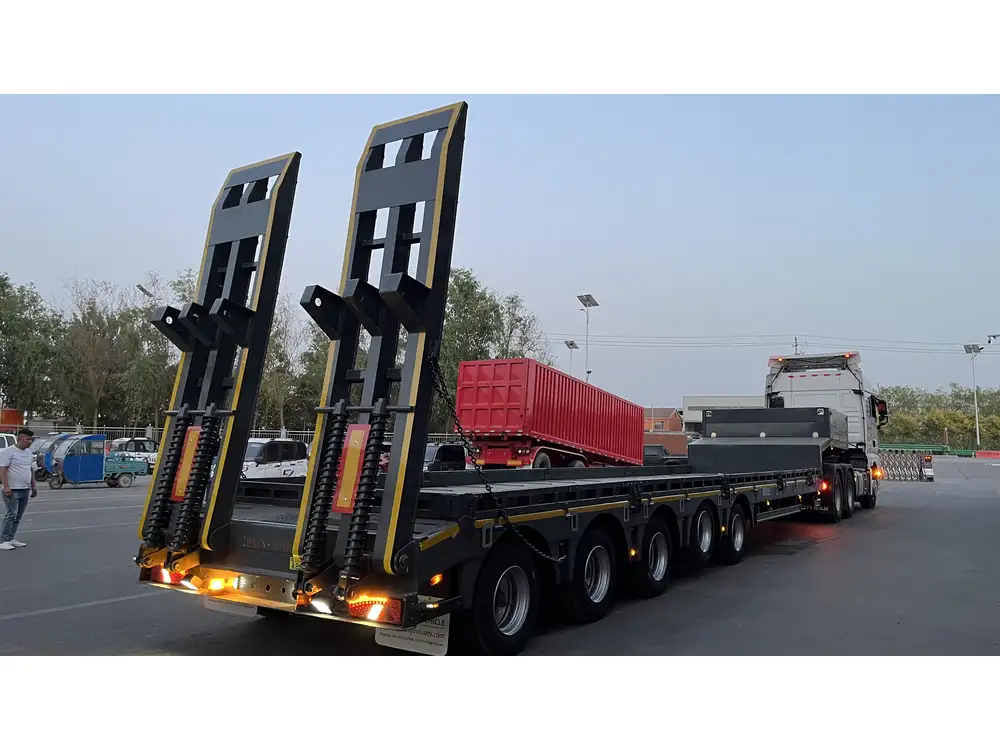When it comes to transporting goods, loading a flatbed trailer safely is paramount. The consequences of improper loading can be disastrous—not only in terms of cargo damage but also regarding road safety and compliance with legal regulations. In this article, we elaborate on effective strategies, insights, and practical tips for achieving a secure and well-balanced load on your flatbed trailer.
Understanding Weight Distribution
Importance of Weight Distribution
Uneven weight distribution is one of the leading causes of accidents involving flatbed trailers. It can lead to swaying, tipping, or even complete cargo failure during transit. Hence, understanding how to distribute weight is vital for maintaining stability and safety.

Calculating Load Weights
Before loading, calculate the total weight of your cargo. This includes not just the goods themselves but also any additional equipment necessary for securing the load. A flatbed trailer is typically rated for a specific load capacity, often ranging between 48,000 to 53,000 pounds for standard models. Ensure that your total load does not exceed this limit.
| Trailer Type | Typical Load Capacity |
|---|---|
| Standard Flatbed | 48,000 – 53,000 lbs |
| Heavy-Duty Flatbed | Over 53,000 lbs |
| Lowboy Trailer | 40,000 – 50,000 lbs |
By understanding both the weight limits of your trailer and the weight of your cargo, you can make informed decisions during the loading process.
Choosing the Right Loading Equipment
Essential Tools and Gear
To load a flatbed trailer safely, the right tools can make all the difference. Here’s a concise list of crucial equipment:
- Straps: High-quality tie-down straps are essential for securing cargo.
- Chains: For heavier items, chains provide extra security.
- Edge Protectors: These help prevent straps and chains from damaging the cargo.
- Dunnage: Wooden dunnage can help level the cargo and provide additional support.
- Forklift or Crane: Depending on the weight and size of your cargo, mechanical assistance may be necessary.

Selecting Tie-Downs
The selection of tie-downs is critical. Investigate the following types:
- Ratchet Straps: Ideal for securing a variety of loads due to their adjustable tension.
- Winch Straps: Typically used for heavier items where more tension is required.
- Cam Buckle Straps: Best for lighter loads, easily adjusted by hand.
Ensure that all tie-downs adhere to the Federal Motor Carrier Safety Administration (FMCSA) regulations regarding working load limits.
Safe Loading Techniques
Preparing the Flatbed
Before loading, confirm that the flatbed is clean and free from debris. This sets a solid foundation. As you prepare to load, inspect the area for stability and ensure the trailer is parked on flat, level ground.

Step-by-Step Loading Process
Loading Heavy Items First: Start by loading the heaviest items first, placing them close to the front of the trailer (towards the cab). This minimizes the potential for tipping and provides better weight distribution.
Staggering Placements: Distribute items evenly across the width of the trailer. Stagger larger items to maximize stability and prevent slippage.
Using Dunnage: Place dunnage between layers of cargo to stabilize items and prevent shifting.
Securing the Load: Use your previously mentioned tie-downs securely. Ensure that they are tight without being overly restrictive. Remember that cargo can shift during transit due to road conditions.
Final Inspection: After securing, conduct a thorough inspection. Look for loose items, and ensure that there is no excessive movement when pushed or pulled.
Legal Regulations and Compliance
Federal and State Regulations
Knowing and adhering to legal regulations regarding load securing is vital. The FMCSA outlines explicit rules for securing cargo, which include:
- A requirement for freight to be tied down every ten feet of additional length.
- A minimum of four tie-downs for any individual item that weighs more than 5,000 lbs.

State-Specific Laws
Be aware that some states might have additional regulations. Researching local transportation laws ensures compliance and helps avoid potential fines.
Analyzing Potential Hazards
Road Conditions
Road conditions can significantly affect the safety of your load. Prepare for adverse weather conditions by using appropriate straps and checking the tightness of your load frequently.

Vehicle Maintenance
Vehicle maintenance plays an integral role in transport safety:
- Brakes: Regularly check brakes to handle additional load.
- Tires: Ensure proper inflation and tread depth.
- Lights: Ensure that your trailer’s lights are operational for night visibility.
Best Practices Post-Loading
Regular Inspections During Transport
Conduct regular inspections of the trailer during transportation, especially after abrupt stops or sharp turns. This practice allows you to catch any shifting or loosening of tie-downs before issues arise.

Offloading Safely
Once at the destination, unload the trailer carefully. Follow the reverse of the loading process by removing the securement devices and unloading heavier items first. Always be aware of surroundings and communicate clearly with any team members involved in the offloading process.
Troubleshooting Common Loading Problems
Unbalanced Loads
If you notice swaying during transport, take immediate action. Pull over to a safe area and adjust the load by redistributing weight more evenly across the trailer.

Shifting Cargo
If cargo has the tendency to shift, consider using more tie-downs, adjusting their position, or adding additional dunnage for stability.
Loose Straps and Chains
Throughout the trip, periodically check securements. If straps or chains are observed to be loosening, stop to properly re-secure them.
Case Studies: Lessons from the Field

Real-World Example 1: Cargo Shift During Transit
A trucking firm transporting heavy machinery experienced significant cargo shift due to improper weight distribution. The cargo was loaded towards the back of the trailer, leading to instability during transit. The result was a near-accident that highlighted the importance of following safe loading techniques.
Real-World Example 2: Successful Load Security
Conversely, a different haulage company implemented rigorous checks and a training program focused on proper loading methods. They reported a reduction in incidents and an increase in on-time deliveries. The secret? Attention to detail, comprehensive training, and adherence to established regulations.
Conclusion: Ensuring Safety and Efficiency
Mastering the complexities of loading a flatbed trailer is imperative for ensuring the safety of your cargo and those on the road. This comprehensive guide is designed to arm you with the knowledge required to navigate the complexities of weight distribution, equipment selection, loading techniques, regulatory compliance, and potential hazards. By incorporating best practices and learning from real-world experiences, you can significantly reduce risks associated with loading and transporting goods. Your commitment to safe loading is not merely about protection—it pays dividends in efficiency, compliance, and peace of mind on the road.



